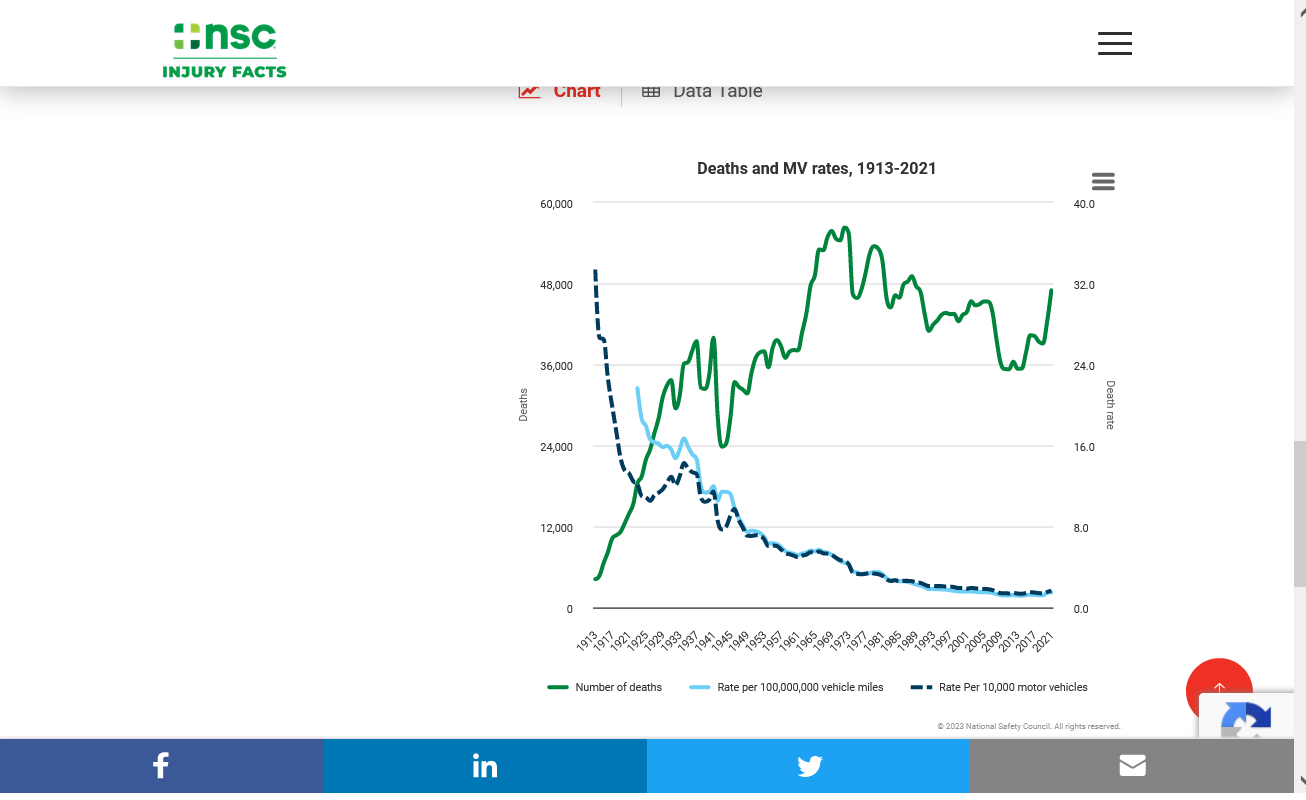
I don't have all the facts, Jean but it appears that Mayo clinic doesn't want the democrats to make healthcare more affordable to people. Instead, it appears they want to maximize profits. There using their financial power to tell legislators how to legislature so they can make more money. They have to agree or they will move to another state.
This is exactly the mindset of the American health care and pharmaceutical industries that results in our costs being several times higher than other developed countries and with outcomes in our country getting worse.
Greed and profit have replaced dedication to the Hippocratic Oath and healing people as the top priority in the United States. And it gets worse every year. The US healthcare system is beyond broken.
I've been saying this for years. There a near 0 chance to fix it without the government taking almost complete control.
Socialized medicine? Yes! Sorry but the greed of the free market on steroids in the medical field has got to be reigned in by extremely aggressive governmental actions.
I'm not for socialism but am for helping people and fixing something that should be a right of every American so that all of us can receive health care and all of us can have something that is close to affordable.
And it's not like we have to change to something unprecedented. The rest of the developed world uses socialized medicine and all those countries have a system that is better than ours in many respects. It's US that are doing the unprecedented think causing a broken system. If we patterned our health care system to something that we know works in numerous other countries, we would be following an already tested and proven method. It's not rocket science. Just common sense, compassion and weeding out the corruption, greed/excessive profits and political DISinformation.
Those are just words. Let's use authentic facts and evidence to back them up.
U.S. Health Care from a Global Perspective, 2022: Accelerating Spending, Worsening Outcomes
The graph below is extremely misleading. This is % of GDP, a relative stat that far under represents the absolute costs because our GDP is many times higher than any of these other countries.
However, it shows that even dialing in how rich we are, Americans still spend well over double what we can afford to pay compared to every other country.

+++++++++++++++++++++
It's often been said that we pay so much more because we have the best health care system. That may be true in some realms but the bottom line is how is this contributing to life expectancy? This graph below is misleading because we lead the world in massive drug overdose deaths and homicides, especially from guns which lowers the life expectancy. Regardless, take note at how much shorter we live in the US compared to every other country that spends MUCH LESS on health care. Note the disparity/gap consistently growing the last 2 decades. People in other countries with socialized healthcare are living longer and longer because of advancements in medicine.......Americans are not!
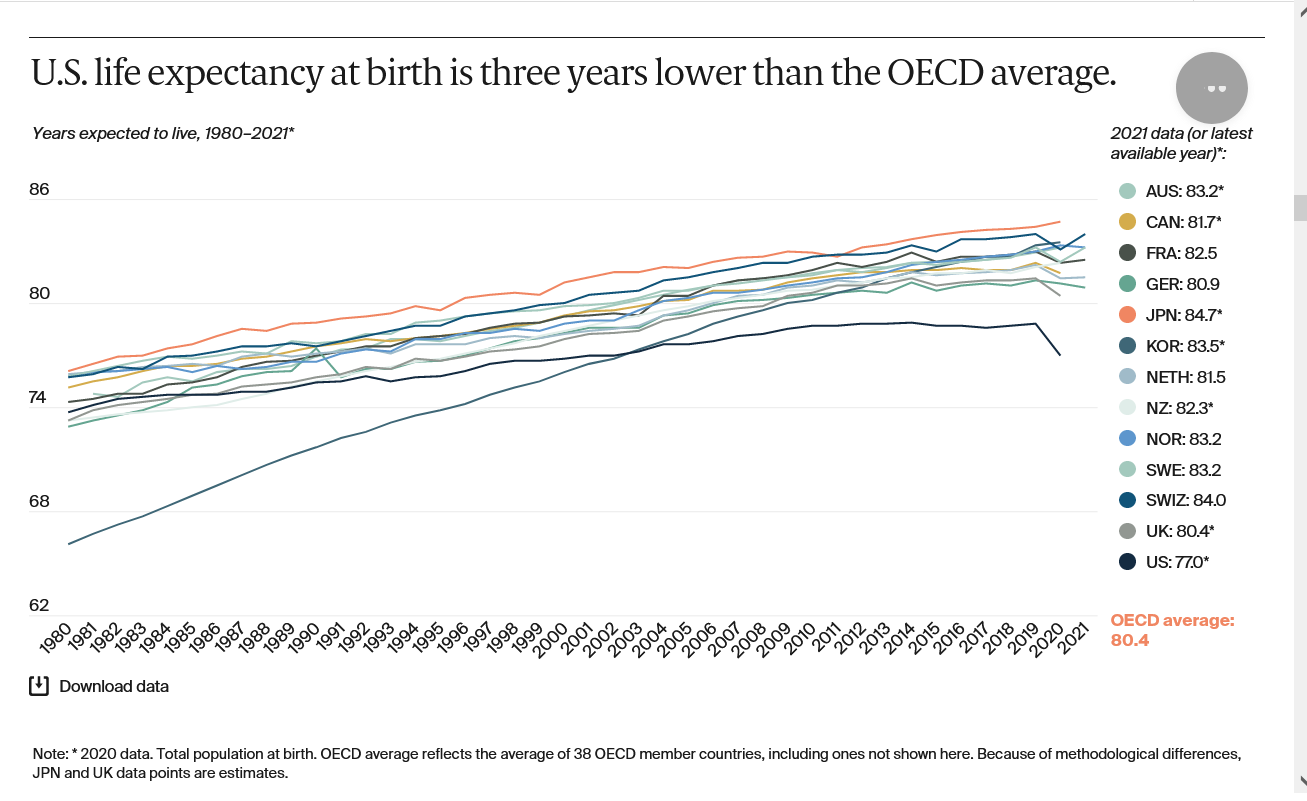
Most of the reason for Americans to pay higher costs is for higher prices. We actually go to the doctors LESS often than other countries because it costs too much in the US.
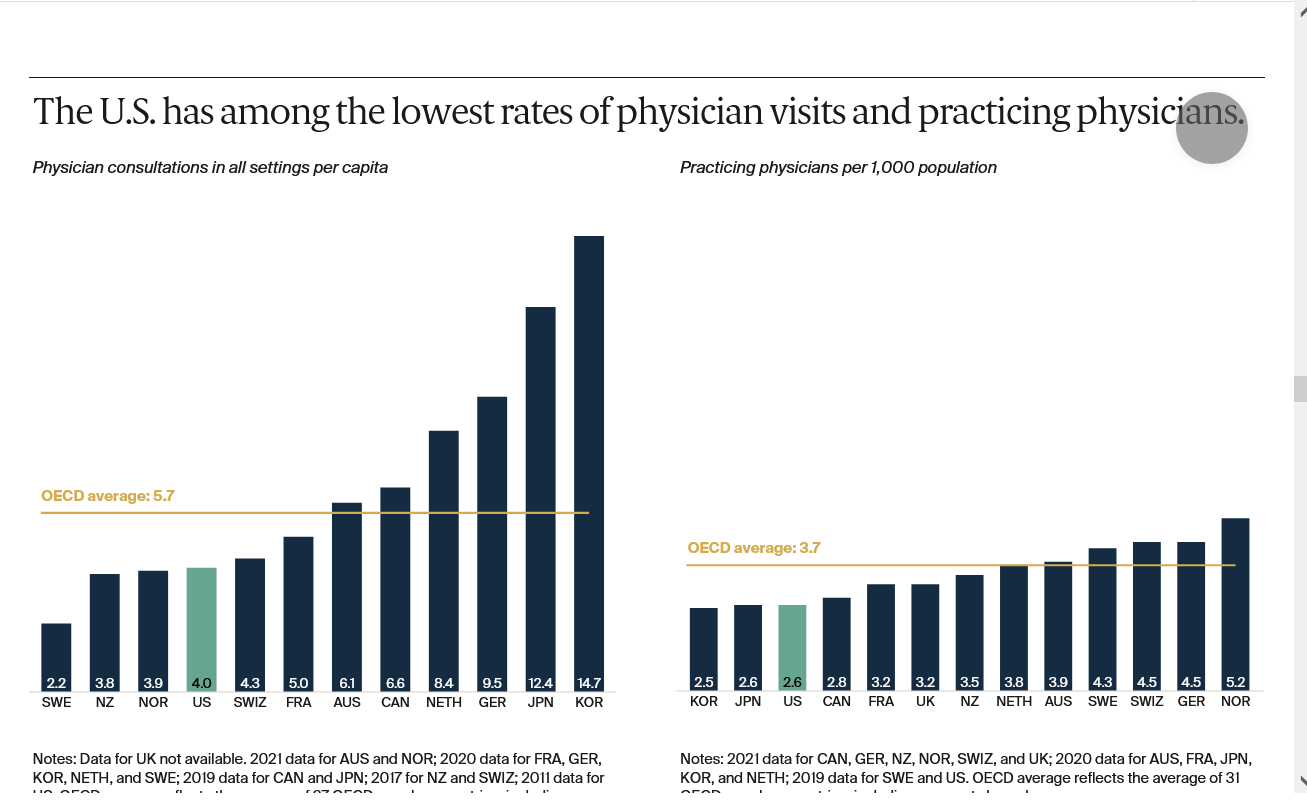
While the United States spends more on health care than any other high-income country, the nation often performs worse on measures of health and health care. For the U.S., a first step to improvement is ensuring that everyone has access to affordable care. Not only is the U.S. the only country we studied that does not have universal health coverage, but its health system can seem designed to discourage people from using services.
Affordability remains the top reason why some Americans do not sign up for health coverage, while high out-of-pocket costs lead nearly half of working-age adults to skip or delay getting needed care.20 The Inflation Reduction Act, which will help reduce the high cost of certain drugs and cap out-of-pocket costs for older Americans, is a step in the right direction.21 But it will take much more to make health care as easy to access as it is in other high-income countries.
A second step is containing costs. Other countries have achieved better health outcomes while spending much less on health care overall. In the U.S., high prices for health services continue to be the primary driver of this elevated spending.22 U.S. policymakers and health systems could look to some of the approaches taken by other nations to contain overall health spending, including health care and administrative costs.
A third step is better prevention and management of chronic conditions. Critical to this is developing the capacity to offer comprehensive, continuous, well-coordinated care. Decades of underinvestment, along with an inadequate supply of health care providers, have limited many Americans’ access to effective primary care.23
The findings of our international comparison demonstrate the importance of a health care system that supports chronic disease prevention and management, the early diagnosis and treatment of medical problems, affordable access to health care coverage, and cost containment — among the key functions of a high-performing system. Other countries have found ways to do these things well; the U.S. can as well.
++++++++++++++++++++++++
Here's another study that points out another HUGE problem in the US healthcare system:
https://www.pgpf.org/blog/2022/07/how-does-the-us-healthcare-system-compare-to-other-countries
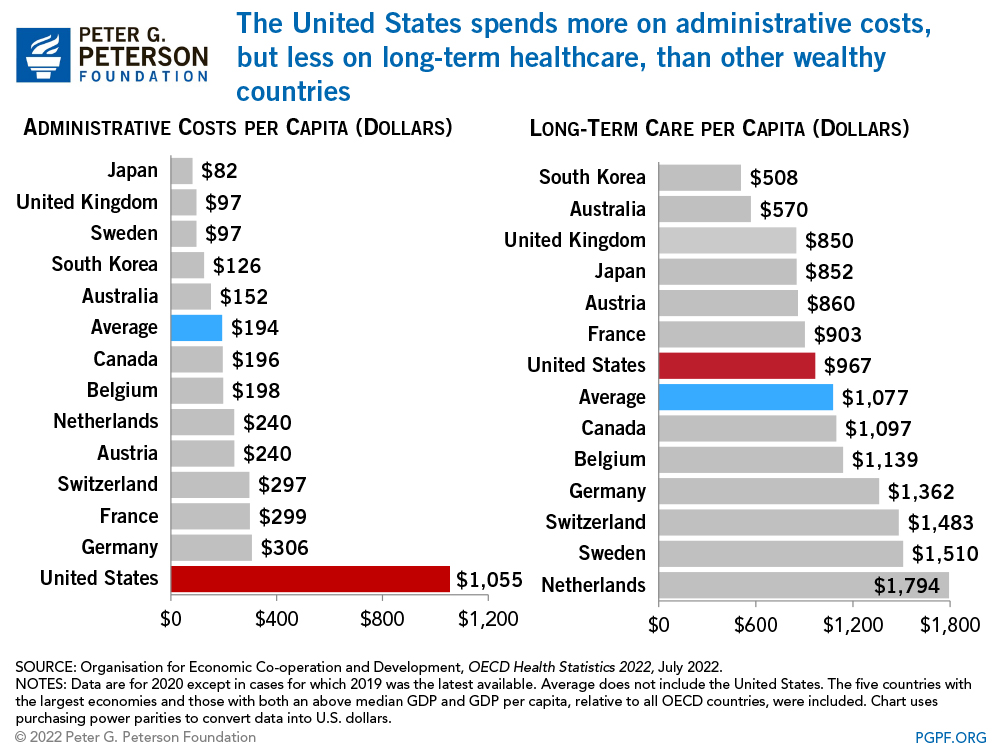
While we're on this topic, let's look at a couple of other metrics which shows the US is close to the worst place to live if you want the best. It's getting really bad. ..........a major crisis.
The National Center for Health Statistics (NCHS) at the Centers for Disease Control and Prevention collects information on deaths involving drugs commonly associated with fatal overdose. This information is available in a searchable database called CDC Wonder. The NCHS also provides 12-month-ending Provisional Drug Overdose Death Counts by state and drug category.
The CDC also provides timely data related to unintentional and undetermined intent drug overdose deaths by participating jurisdiction through the State Unintentional Drug Overdose Reporting System (SUDORS). Similar data related to nonfatal drug overdoses are reported through CDC’s Drug Overdose Surveillance and Epidemiology (DOSE) system.
See the latest from NIDA on drug overdose research.
+++++++++++++++++++++
Chart below:
More than double in the last 6 years.
5+ times higher than 2 decades ago.
https://nida.nih.gov/research-topics/trends-statistics/overdose-death-rates

It's mostly from Fentanyl with Meth a distant 2nd place!
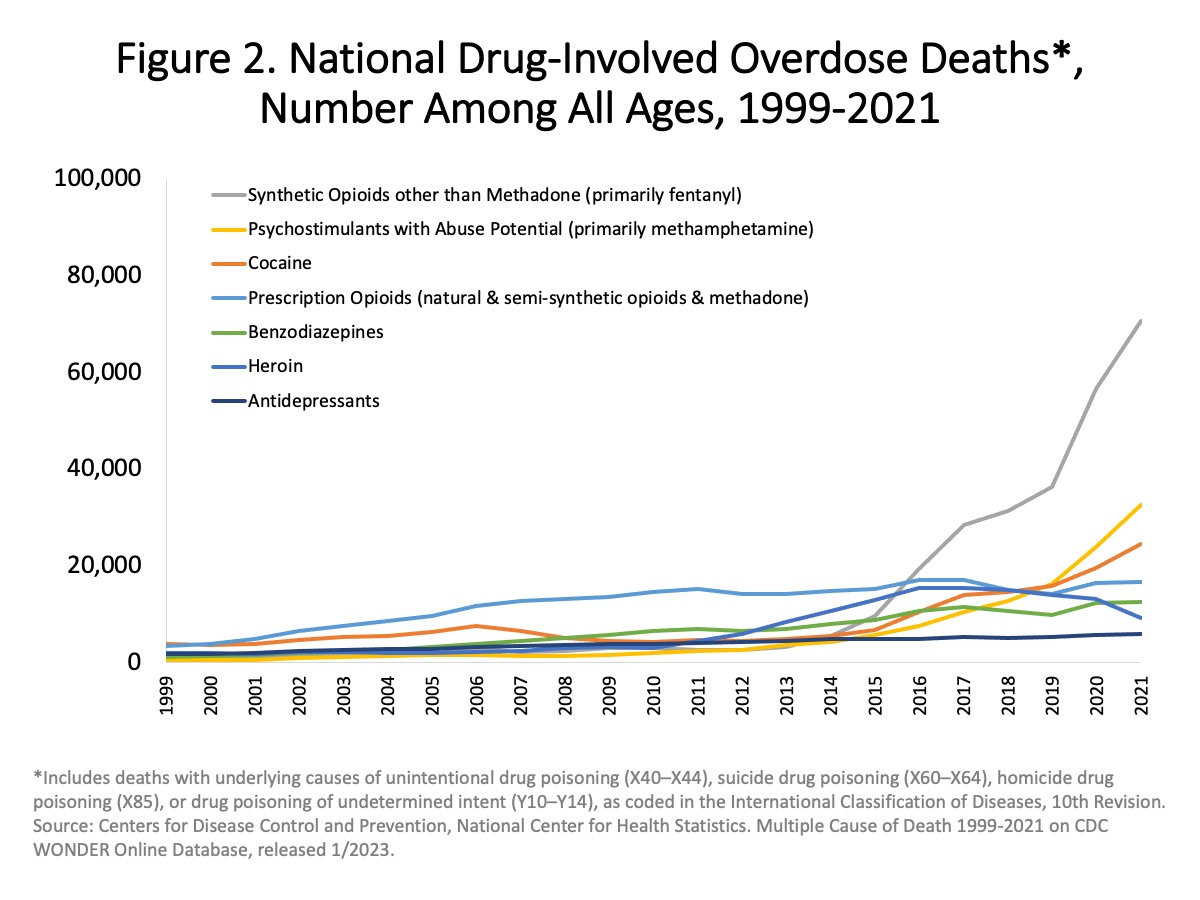

+++++++++++++++++++
https://www.vox.com/policy-and-politics/2017/6/28/15881246/drug-overdose-deaths-world
The graph below is mind boggling. The US rate for drug-death rate of 245.8 is 6+ times higher than the World average of 39.6.
:no_upscale()/cdn.vox-cdn.com/uploads/chorus_asset/file/8761583/drug_overdose_deaths_world.jpg)

https://www.healthdata.org/acting-data/gun-violence-united-states-outlier
Age-adjusted firearm homicide rates in the US are 13 times greater than they are in France, and 22 times greater than in the European Union as a whole. The US has 23 times the rate of firearm homicide seen in Australia.
The trend continues for percentage of child deaths caused by firearms. Including physical violence, suicide, and unintentional injury, gun violence accounts for over 7% of deaths in the US among those under age 20, a figure that stands far above peer countries. When excluding infants, who have higher rates of death from neonatal causes, that number jumps to nearly 15%.
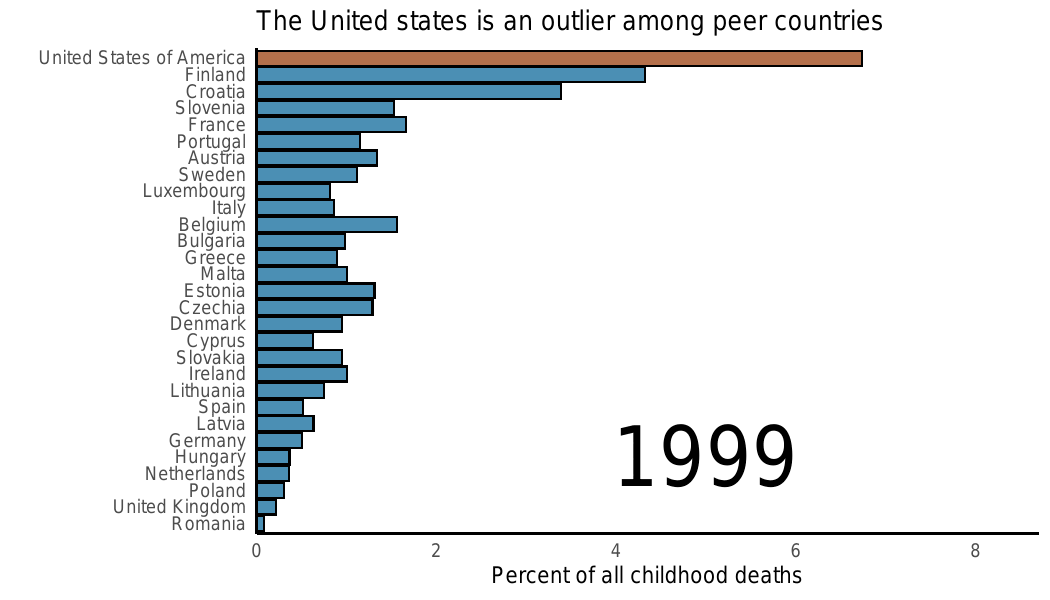
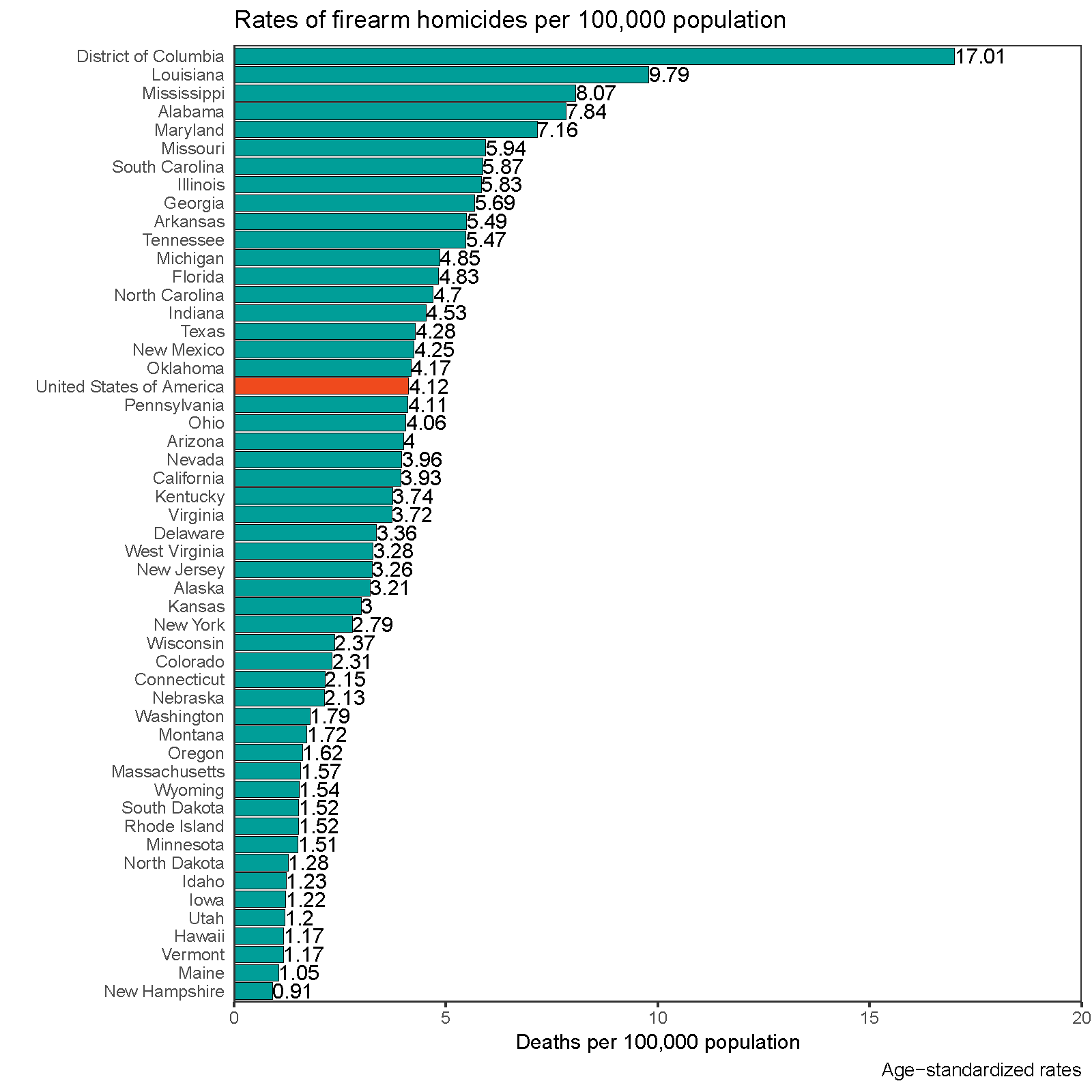
Washington, DC, accounts for the greatest percentage of child deaths by firearm, where 10.8% of those who die under age 20 are victims of gun violence. When excluding infant deaths, that becomes nearly a third. Illinois and Louisiana also stand out with 10.2% and 9.8% of child deaths, respectively, being attributed to firearms. Meanwhile, Hawaii, Rhode Island, and Massachusetts come in at the bottom of the list, each with less than 3% of children being killed by guns.
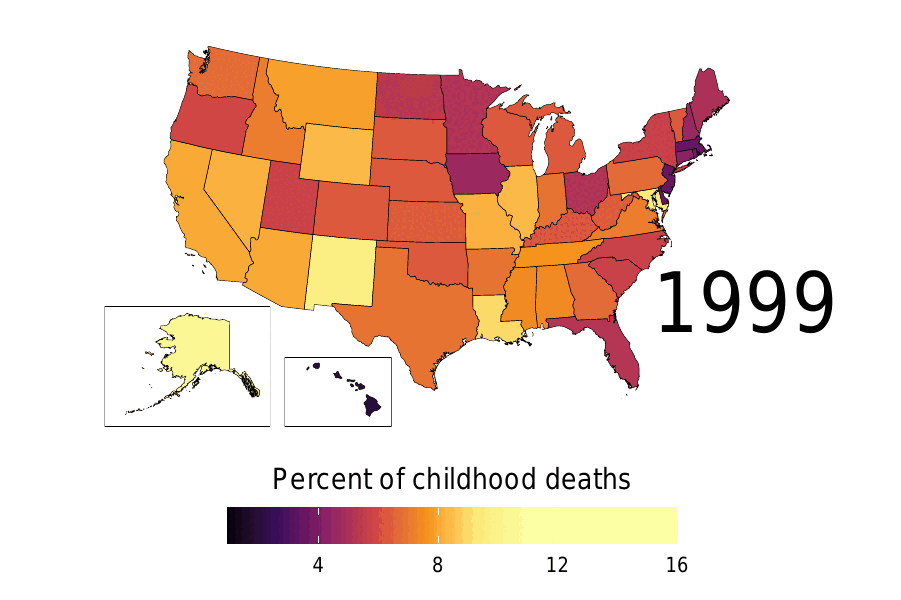
April 26, 2023
What the data says about gun deaths in the U.S.
https://www.pewresearch.org/short-reads/2023/04/26/what-the-data-says-about-gun-deaths-in-the-u-s/
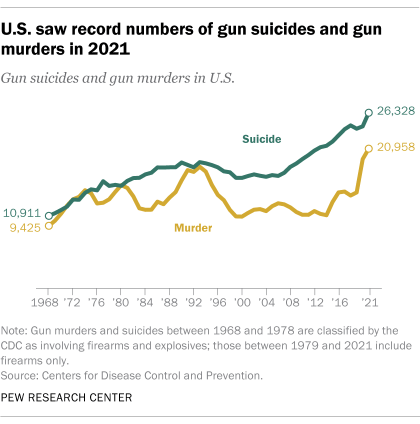
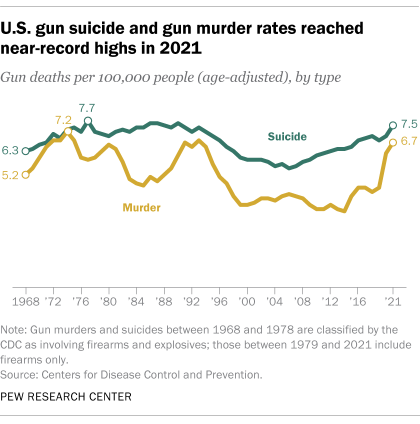
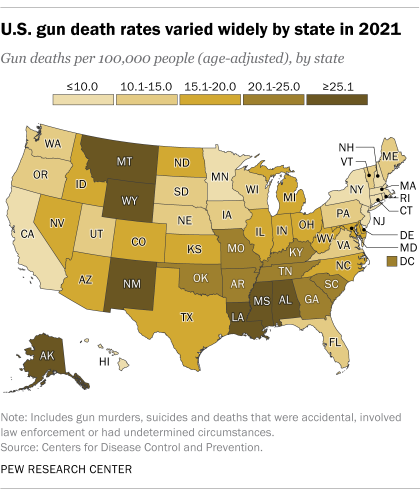
Previous threads:
Shootings 4-17-23
Started by metmike - April 17, 2023, 6:34 p.m.
https://www.marketforum.com/forum/topic/94589/
Shooting in Louisville, Kentucky
Started by metmike - April 10, 2023, 11:05 a.m.
https://www.marketforum.com/forum/topic/94446/
‘Tennessee Three’
11 responses |
Started by metmike - April 10, 2023, noon
https://www.marketforum.com/forum/topic/94449/
Data:
US Traffic Deaths Drop ~ Still A 'Crisis'
Started by 12345 - April 20, 2023, 11:58 a.m.
https://www.marketforum.com/forum/topic/94659/
Motor-vehicle Fatality Trends
Between 1913 and 2021, the number of motor-vehicle deaths in the United States (which include all types of motor vehicles, including passenger cars, trucks, buses, and motorcycles) increased 1,018%, from 4,200 deaths in 1913 to 46,980 in 2021. However, the role cars play in daily life is vastly different now than when tracking began.
In 1913, there were about 1.3 million vehicles and 2 million drivers, and the number of miles driven was not yet estimated. The latest 2021 data report 282.4 million vehicles, 228 million licensed drivers, and 3,140 billion miles driven annually.

